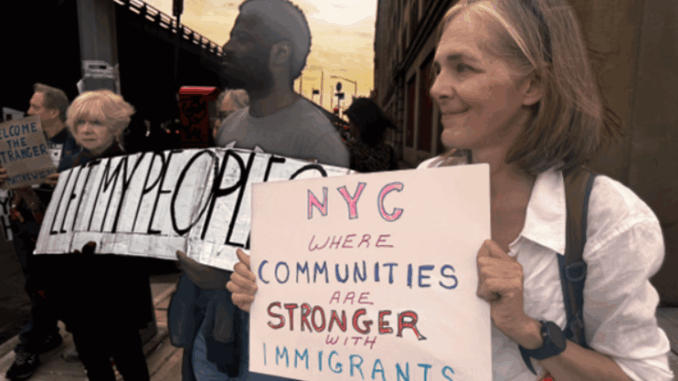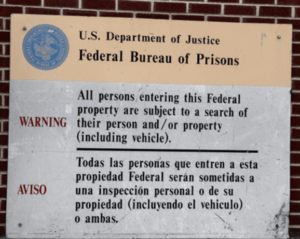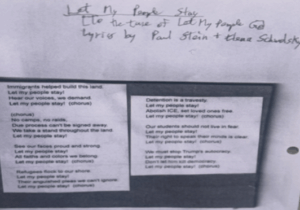
By Kaila Maceira
Car horns echoed down Brooklyn’s Third Avenue on Tuesday evening as drivers honked encouragement for protesters gathered outside the Metropolitan Detention Center in Sunset Park. People came together in prayer, blending protest with quiet moments of reflection. Chants of “Abolish ICE!” together with “Free them all!” rang outward.
The weekly “Vigil for Democracy” outside the Metropolitan Detention Center in Sunset Park began this past July when advocate Lee Crawford and Reverend Juan Carlos of Good Shepherd Lutheran Church joined forces. Since the organizers can’t enter the federal facility, they practice “public witnessing” every week. They also document conditions inside indirectly, by speaking with family members and people released from MDC, and they publicize accounts gathered by legal sources and advocacy partners. Their initial Moral Witness event in July evolved into a weekly event each Tuesday at 6 p.m.at Third Avenue and 29th Street, near the facility, where they combine prayer with chants to advocate for the abolition of ICE and for transparency in detention practices.
The 2003 Homeland Security Act established Immigration and Customs Enforcement (ICE) as a new agency under the newly created Department of Homeland Security. Today, ICE operates hundreds of detention facilities, which include both local jails and private detention centers that hold immigrant detainees throughout the United States. The ICE detention population on September 7, 2025, consisted of 58,766 individuals; however, according to TRAC, a data distribution organization founded in 1989 at Syracuse University. 70.8% of these detainees had no criminal history. The Trump administration’s new enforcement strategies led to an expanded detention system, but critics like the National Immigrant Justice Center and the Detention Watch Network warn that ICE’s internal inspections are often superficial and ineffective.

ICE s impact stretches across the country and into the streets of Sunset Park. “The public presence at the site serves as a reminder to detainees that they have not been abandoned,” said Diana Aronson, a protester.
The vigil speakers emphasized that their demands form part of an ongoing movement rather than a single act of solidarity. “The fight against immigrant detention requires a comprehensive approach,” said Crawford.
The religious leaders at the vigil linked their actions to traditional religious practices of standing against oppression. “The walls confine human beings who are both parents and children and adults who share the divine creation of God,” said Reverend Juan Carlos.
“Permanent community involvement is the key to achieving real change, as single events do not lead to lasting results,” said Maria Hernandez, a college student.
“System victory occurs when people stop showing up. Our collective presence exceeds their expectations. Our physical attendance at this location represents an active form of resistance.” Jorge Ruiz, also a college student.
An organizer passed around a handout with the lyrics to “Let My People Stay,” sung to the tune of the spiritual “Let My People Go.” The adapted song called for abolishing ICE and defending immigrant rights.

“The vigil represents an ongoing process rather than a single isolated event,” said Reverend Mark, concluding the event. “Our combined presence at these walls reduces their power each time we gather as a group. Our unified voices will maintain solidarity, which will survive all forms of oppression.”
